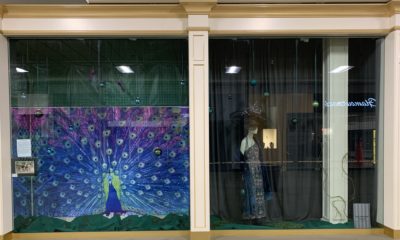IN A DIGITALLY mediated future, there will be no “business as usual,” no “steady as she goes” approach to the way a company addresses the rapidly changing needs of its customers. While I have heard company leaders say they need to keep ahead of their customer and meet them where they are, I often wonder how do you actually do it? I’ll suggest some ideas for how we can work with the pace of change later in this series of blogs, but for now, I want to focus on how change affects expectations about how brand interactions should unfold for both an emerging group of digital experience seekers and more traditional customers.
There is no doubt that a big influence on our ability to navigate the future will be to understand the data-driven experiences that an emerging cohort of consumers already takes for granted. Engaging in digitally mediated experiences is a familiar paradigm for Gen Z. For them, there was no before and after the smartphone. The consequences of growing up in a society in which communication modalities shift from embodied, face-to-face interactions to those being mediated through hand-held devices, usher in a wake-up call for those who create brand experiences.
This may be especially true as a go-forward strategy when considering the effect of a global pandemic that has suddenly put the world of hospitality and retail economies into a temporary state of inertia. While the flow of goods and services have slowed and outright halted in many business sectors, our deep socio-cultural need for authentic communication, connections and empathic relationships have spurred a rapid expansion online communities with which younger customers are very familiar. What had been already growing as an alternate engagement vehicle – on-line business, co-working environments and social forums – now seem less in the margin, and have begun to emerge as an effective, if not just safer, way to connect.
Prior to the COVID-19 pandemic, co-working environments were popping up everywhere. Temporary work spaces, in which you could work alongside others in the gig economy, were gaining favor with a work force that increasingly felt that “going to the office” was no longer synonymous with sitting in a corporate office cube. For some time, researchers of the millennial workforce were noticing a shift in how this generation was reshaping business as un-usual. Telecommuting, flexible office hours and connecting over the internet in chat rooms or virtual webinars was preferred as they broke with traditional work-place paradigms.
It will be interesting to see how co-working environments will evolve when people feel “safe enough” to leave the confines of our homes, and congregate in shared [physical] workspaces. No doubt, WeWork, Convene and a host of other shared workspace providers are busy re-thinking strategies for working together yet apart, as some semblance of social distancing residue lingers in the workplace as well as the grocery store.
In the past few weeks, I have had virtual happy hours with friends in other countries. For the time ever, we have met virtually over a glass of wine and hors d’oeuvres, a thousand miles apart. And you know, it wasn’t all that bad. I don’t think it will replace the authenticity of embodied interactions in an actual physical place, but the present circumstances does ask us to question how it is that we have not done this more frequently in the past even though the technology has been available for some time. Why did I ever wait to hang out with friends at special occasions, holidays or birthdays?
Advertisement
Over the past few weeks, we’ve had more frequent and longer conversations with friends and family members in digital space than we have ever in the past. I’m curious about whether or not we will continue to do so when we are not sharing the common fear of an invisible pathogen that has brought to light our collective vulnerability regardless of race, religion, where or how we live our lives.
Social neuroscience suggests that it takes about thirty days to develop a new neural pathway for a behavior. Since recent estimates for an effective COVID-19 are projected for about another eighteen months, it stands to reason that a new way of communicating and congregating will be built into our psycho-social engagement system. This may be new for the Boomers and prior generations, although nothing new to millennials and Gen Z’s. Older generations can now “get with the program,” and more closely align with a growing population of youth for whom interacting this way is never given a second thought.
The whole idea of what an embodied brand experience means may now see a shift as a growing acceptance of the power of the digital experience place becomes, by necessity, more familiar. There may be no “going back to normal.” We may, in effect, be living in the process of co-creating a new normal. In what ways will it be different as a reflection of our own transformation through this reset period of isolation?
A global pandemic has had a number of remarkable effects on our world; cleaner air, fish back in the canals of Venice, an awareness of a shared sense of vulnerability and that we all needed to just slow down, take stock, and appreciate life more, maybe become more aware of what’s been missing. The whole planet has been in an unprecedented and uncertain pause, an unfathomable respite from the frenetic pace that had become so commonplace.
What happens post pause? How do millions of people move forward in new, perhaps different, ways of working and connecting? What does a post-pandemic marketplace look like in which people feel free to reconvene in their gathering places, dine out, book travel and destination vacations, shop in busy places, and populate favorite spaces? What practices from this period of adaptation will be likely brought over into our new normal?
Some of the shifting shopping paradigms that had not yet gained prominence may well be pushed to the mainstream. I would expect services like Fresh Direct, Uber Eats, Grub Hub, Amazon, UPS and FedEx to grow as a result. BOPIS (Buy Online, Pick Up In Store) has been growing in use for years as online shopping created the endless aisle and ease of shopping for your heart’s desire from the comfort of your couch. That too is undergoing a shift to BOPAC (Buy-Online, Pick Up-at-Curb) where you never actually have to go into the store at all. Make your order and pay online, then set a time for pick up. When you roll into the parking lot, you are directed to park in a designated spot where your groceries are delivered to your car. The grocery store effectively becomes a simple warehouse while the website and parking lot the areas of guest interaction. In the not so distance past, a customer may have had to go into the store and pick up their goods at a customer service counter and briefly interact with another human. Now, it may well be that your order is waiting for you in the parking lot and an access code is texted to you to open the locker where your goods have been stowed. This will be shopping literally at arm’s length, with the “social” removed from the “distancing.”
All of this points to the increasing need to make the interiors of stores, hotels and other places of brand engagement worth the trip. I am going to take this as good news for the designers of these interaction places as they are going to be put to the test and deliver experiences that make being in a brand experience place something remarkable. And there will be a play for technology somewhere in the customer journey to facilitate the engagement. The question will be where or not we infuse these new interactions with “technempathy” – technology in the service of empathic extension – in a manner that maintains the “social” in the new social distancing paradigm.
Advertisement
The idea of brand relevancy is being called into question as expectations are changing to meet the needs of an emerging guest. This is truly the road less traveled, the one where we can’t actually see the end but must summon the courage to continue without knowing the destination. The key is to be looking for opportunity rather than bemoaning what is lost. As the pace of change accelerates, and it will, we may all continually be in the in-between. Not between a rock and a hard place, but between what doesn’t serve us anymore, and what engages more deeply and remains relevant. Relevancy is contextual. And our context is continually in flux.
These are times to evaluate and openly question “why” to determine a new “how.” Pay attention. Learn and put new knowledge into practice. Sometimes change is forced upon us. Our job is to take up the challenge of becoming more agile, and adopting a growth mindset rather than resisting what will we can’t stop anyway. Not right now. A virus will be stopped, eventually. The pace of change, however, will continue on. This is an opportunity for the reinvention of customer interactions, ones that force brands and the designers of experiences to step up their game to compete in a marketplace with new rules.

 Photo Gallery1 week ago
Photo Gallery1 week ago
 Headlines7 days ago
Headlines7 days ago
 Headlines1 week ago
Headlines1 week ago
 Headlines2 weeks ago
Headlines2 weeks ago
 Headlines1 week ago
Headlines1 week ago
 Designer Dozen2 weeks ago
Designer Dozen2 weeks ago
 Headlines2 days ago
Headlines2 days ago
 Designer Dozen5 days ago
Designer Dozen5 days ago





















